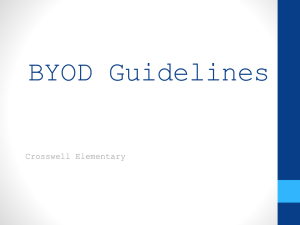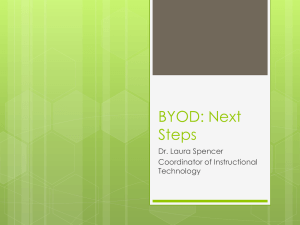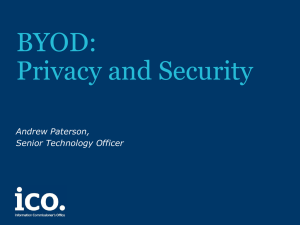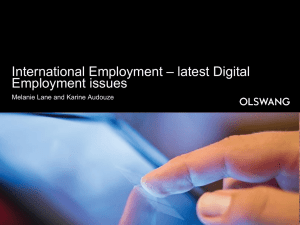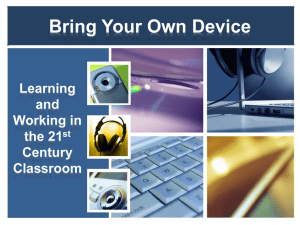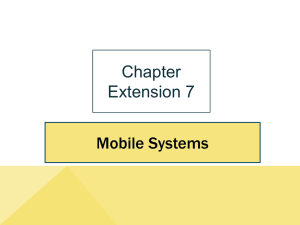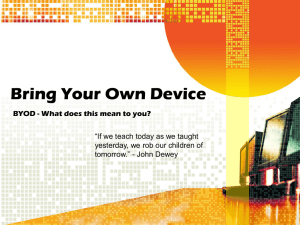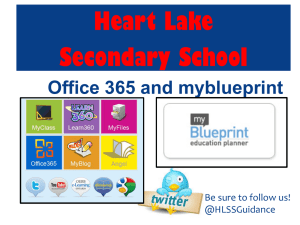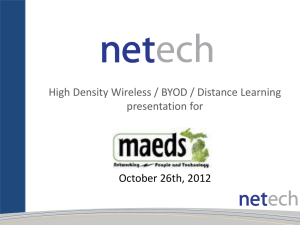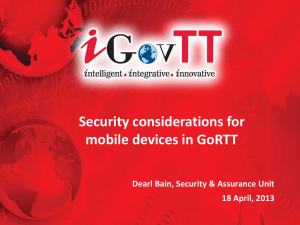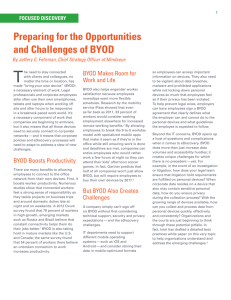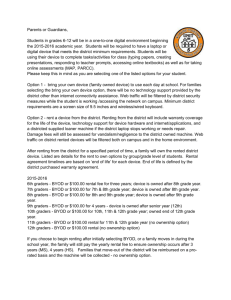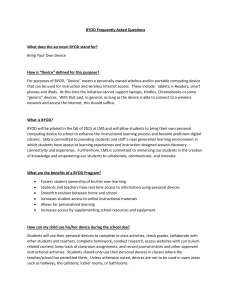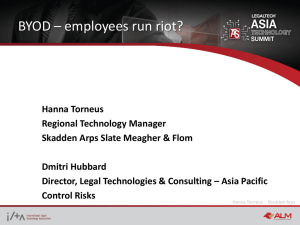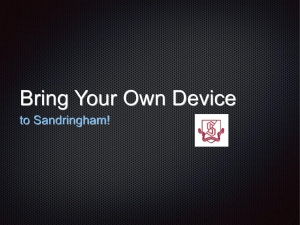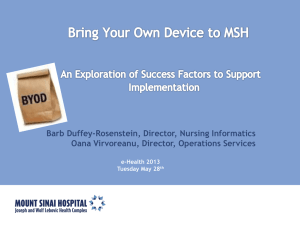BYOD and Classroom Management in Sec. Ed.
advertisement
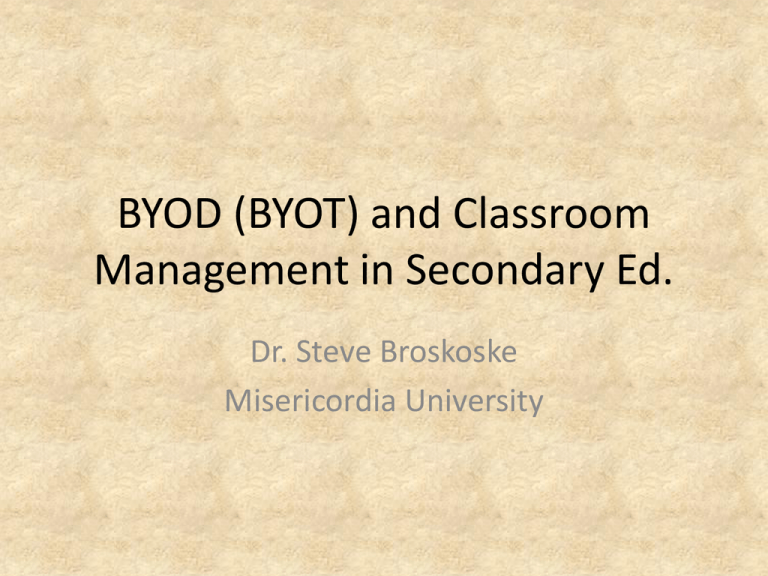
BYOD (BYOT) and Classroom Management in Secondary Ed. Dr. Steve Broskoske Misericordia University Coming to “Terms” with BYOD • BYOD: Bring your own device. • BYOT: Bring your own technology. • 1:1 Terms refer to students bringing technology to use in school vs. relying on school-provided devices and allowing students to log onto the school’s network. Benefits of BYOD • Increases tools available for use in the classroom: – Research, Apps, Google Docs (and forms), Web tools, back channel, collaboration, wiki contributions, polling, QR codes, quizzes. • Students learn to use technology they already own and regularly use. • Ensures more current technology at a lower cost to taxpayers. 4 Models of BYOD 1. Ready-to-use model: Students place personal device in right hand corner of desk. Device is “ready to use” if necessary, in sight of teacher, not used unless directed/needed. 2. Guided model: Students leave personal device in back-pack or locker unless teacher has requested devices be brought into the learning environment. Teacher guides student use of device during classroom activities. LaMaster, 2011 4 Models of BYOD 3. Local use only model: Students instructed not to use web or printing (network) tools in class, but may use locally stored tools such as electronic text or note-taking software. This model requires heightened awareness as wireless access will be available everywhere in the building. 4 Models of BYOD 4. Personal goals model: Students have free access to personal device – how and when they use the device is determined by the student. Students have clear understanding that personal devices are to be used for activities related to the educational process. Debriefing on Models • Local use only model • Personal goals model More management needed • Guided model Student independence • Ready-to-use model Challenges to BYOD • Classroom management (the obvious!). • New pedagogy requiring new skills on part of teachers. • New ways to learn for students. • Requires use of new and different applications (vs. PowerPoint, Word, etc.). • Practical/technical issues. – Power access, battery issues, ability to connect to network. • New ways to cheat. Challenges to BYOD • What happens if… – A student’s device is stolen? – A student forgets to bring a device? – A parent refuses to allow a student to BYOD. – A family cannot afford to buy a device? – Students, having extended access to devices, experience increased cyberbullying? “Acceptable Use” Policies in the Making • “Students are responsible for good behavior on school computer networks just as they are in a classroom or a school hallway. Communications on the network are often public in nature. General school rules for behavior and communications apply (see Board Policy 3200). The network is provided for students to conduct research, complete assignments, and communicate with others. Code of Conduct Statement Bellingham Public Schools, OR “Acceptable Use” Policies in the Making • “Access to network services will be provided to students who agree to act in a considerate and responsible manner. Use of the network resources must be in support of educational goals.” Code of Conduct Statement Bellingham Public Schools, OR Current State with BYOT • Realize that we are in the experimental mode with 1:1. – Little research exists. – Little experience in classroom management. – Little research indicating increased educational benefits due to BYOD. – Little experience implementing acceptable use policies. In the Future Device time-out. Please put your device away.

